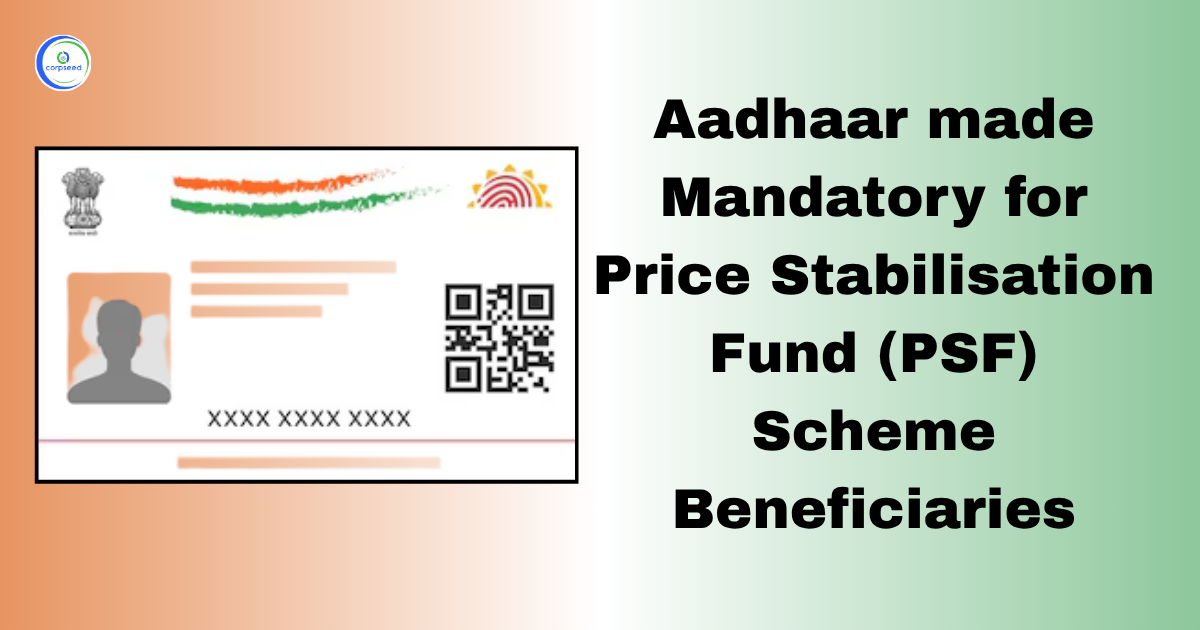Introduction: Indian Footwear and Leather Development Programme
After China, India is the second-biggest manufacturer of footwear and leather garments worldwide. It is an industry renowned for reliably high export earnings and one of the top ten foreign exchange earners for the country. India is rich in its raw material supplies, having access to 20% of the world's cattle and buffalo and 11% of the world's goat and sheep population. This is an employment-intensive industry and employs more than 4 million persons, mostly from the weaker sections of society. Several initiatives of the government, including the IFLDP, have made this leather industry more productive, competitive, and sustainable.
Table of Contents
- Introduction: Indian Footwear and Leather Development Programme
- What Is IFLDP?
- Benefits of Indian Footwear and Leather Development Programme (IFLDP)
- Eligibility of Indian Footwear and Leather Development Programme (IFLDP)
- Sub-Schemes Under Indian Footwear and Leather Development Programme (IFLDP)
- Procedure for Indian Footwear and Leather Development Programme (IFLDP)
- Documentation Required for Indian Footwear and Leather Development Programme (IFLDP)
- Impact of IFLDP
- Conclusion
--------------Blog Contact Form-------------
What Is IFLDP?
IFLDP, or the Indian Footwear and Leather Development Programme, is an initiative taken up by the government to raise the competitive stature of the footwear and leather industry in India. In this, infrastructure up-gradation, skill up-gradation through training programs, promotion in technology, and promotion of access to markets have been provided for. It also provides financial assistance, subsidies, and support for compliance with quality requirements to the eligible beneficiaries-manufacturers, exporters, associations, etc.-in the sector. IFLDP envisages strengthening the capability of the industry, enhancing domestic consumption, and export potential by encouraging modernization and fostering growth, thereby contributing to economic development and increasing India's global footprint in footwear and leather products.
Benefits of Indian Footwear and Leather Development Programme (IFLDP)
- Infrastructure Development: The schemes assist in infrastructure development for the leather sector by setting up mega leather footwear and accessories clusters.
- Environment Sustainability: The industry is promoting sustainable, environment-friendly technologies to reduce the carbon footprint of its products.
- Creation of Employment: By promoting greater investment and production besides creation, IFLDP leads to significant employment opportunities, particularly for women.
- Skill Development: The setting up of training centers and institutions results in higher skill levels amongst the workers subsequently leading to improved productivity, efficiency, etc.
- Export Promotion: The export promotion program includes brand promotion & establishment of design studios to make Indian leather brands visible in the external market.
- Growth models: IFLDP serves as an enabler of further investment in the leather sector and facilitates production increase, which leads to economic activity.
Eligibility of Indian Footwear and Leather Development Programme (IFLDP)
The IFLDP sets different eligibility requirements depending on the specific sub-scheme. The eligible entities are:
| ENTITIES | |
| Footwear Manufacturers | Entities engaged in the manufacturing of footwear products. |
| Leather Manufacturers | Entities involved in the processing and production of leather and related goods. |
| Exporters | Entities engaged in the exportation of footwear and leather products from India. |
| Prospective Entrepreneurs | Individuals or firms aiming to establish new ventures or expand existing ones within the footwear or leather industry. |
| Industry Associations | Associations representing manufacturers and exporters of footwear and leather products. |
| Training and Skill Enhancement Institutions | Institutions offering training courses and programs designed to enhance skills relevant to the footwear and leather industry. |
| Research and Development Organizations | Organizations focused on research, innovation, and technological development pertinent to the footwear and leather sectors. |
| Service Providers | Organizations focused on research, innovation, and technological development pertinent to the footwear and leather sectors. |
Sub-Schemes Under Indian Footwear and Leather Development Programme (IFLDP)
IFLDP has the following sub-schemes under it, which tend to address various needs of the leather and footwear segment:
- Sustainable Technology and Environmental Promotion: To promote technological upgradation and sustainable technology development, in the sector.
- Development of the Leather Sector through Integration (IDLS): Enhancing productivity and competitiveness of production by modernizing and upgrading production units.
- Setting up of Institutional Facilities: This involves establishing support and service facilities for the leather industry, such as training centers and research institutes.
- Mega Leather Footwear and Accessories Cluster Development: Development in this sub-scheme means the development of large clusters so that more than one leather and footwear manufacturing unit may be housed therein and provided with common facilities and infrastructure.
- Brand Promotion: Allowing enables the promotion of Indian leather brands abroad to enhance their visibility and competitiveness.
- Development of Design Studios: It is a new sub-scheme for promoting marketing and export linkages, proposed outlay ₹100 crore; arranging buy-sell meets and displays of designs to international buyers, acting as an interface for trade fairs..
Procedure for Indian Footwear and Leather Development Programme (IFLDP)
This is the general outline of the procedure involved in the IFLDP:
- Introduction and Announcement of the Scheme: The scheme IFLDP shall be announced by the government at the Centre through formal announcements and notifications. Such an announcement shall carry the objectives, scope, and eligibility criteria for the IFLDP.
- Application Process: Entities that meet the eligibility criteria will need to apply for their participation in the IFLDP. The application will require information about the company/organization, current involvement in the Footwear and Leather Sector, proposed projects or initiatives under the scheme, and expected outcomes.
- Project Proposals: An applicant shall be required to present a comprehensive proposal of the activities they intend to pursue under the IFLDP. This may include but is not limited to investment plans, technology adoption, skill development initiatives, strategies for market expansion, and measures for sustainability.
- Evaluation and Selection: The merit and feasibility of the projects are evaluated through a proper appraisal by the concerned authorities. Potential impact on industry growth, employment generation, export promotion, and technological advancement are the criteria that are taken into account for evaluation.
- Approval and Funding: Evaluation criteria indicative of a viable project are approved for funding by the IFLDP. The government may provide financial assistance, subsidies, grants, or any other form of support under the scheme guidelines to facilitate the implementation of the project.
- Implementation: After getting approval and disbursement of funds, the selected applicants implement their respective projects based on stipulated timelines and milestones. This will involve the execution of the planned activities by deployment of resources, acquiring technology, conducting training programs, etc.
- Monitoring and Evaluation: Monitoring mechanisms along the life are in place to track progress against the set timelines and budget and value for money for the overall impact of the projects. This helps, through periodic reviews and assessments, in the identification of challenges and making necessary adjustments to optimize outcomes.
- Completion and Reporting: Participating entities shall submit comprehensive reports showing achievements, results of the project, challenges encountered, and lessons learned during the implementation phase.
- Inbuilt Follow-up and Sustainability: Towards the close of the project, there are efforts to sustain all benefits and impacts that get triggered as an outcome of the IFLDP initiatives. This also encompasses sustained market access, up-gradation of technology, skill development, and the creation of a conducive environment for growth within the footwear and leather sector.
More steps or modifications to the procedure as per the updating of the scheme by the government under the IFLDP may be included. Interested parties are advised to refer to the latest official guidelines and notifications for detailed and current information.
Documentation Required for Indian Footwear and Leather Development Programme (IFLDP)
| DOCUMENTS | DETAILS |
| Completed Application Form | The application form should be downloaded from the NSWS portal and correctly filled out. |
| Project Proposal | A full proposal of the project with objectives, expected outcomes, and requirement of resources. |
| Financial Statements | The audited financial statements of the applicant organization for the last three years. |
| Business Plan | A detailed business plan on how the objectives of the project will be realized. |
| Environmental Clearance | All Environmental Clearances and compliance certificates. |
| Additional Supporting Documents | Any other documents as may be specified under the guidelines of the concerned sub-scheme. |
Impact of IFLDP
Highly valuable contributions to the leather and footwear industry in India have been made by the program. The major ones could include the following:
- Generation of quality employment: the program has generated quality employment, more so for women. This means that it has been of use in ensuring the equality of gender and poverty reduction.
- Uplifting the skills: with the establishment of training centers and institutions, the level of skill of workers in the leather sector was high, hence productive and efficient.
- Environmental Benefits: Promoting sustainable technologies has made the leather industry more eco-friendly and helped reduce its carbon footprint by creating a sustainable production system.
- Economic Growth: This program has facilitated additional investments in the leather sector and, consequently, increased production, which has contributed to economic growth.
- Export Promotion: The brand promotion and design studio sub-schemes have created better visibility of Indian leather brands in international markets, thereby enhancing export potential.
Conclusion
The IFLDP provided an integrated program for the revival of the leather and footwear industry in India. The program, through its various sub-schemes, not only helped overcome the major problems impeding the overall development of the industry but also looked toward sustainable practices and raising the global competitiveness of this industry. It had huge impacts on the generation of employment, development of skills, environmental sustainability, and economic growth; therefore, the IFLDP became a very vital part of India's strategy for development.
The overall growth and sustainability of the leather and footwear industry, in the long run, could be ensured by continued support and expansion of the IFLDP by the Indian government, thereby adding to the general economic development of the country.
This portion of the site is for informational purposes only. The content is not legal advice. The statements and opinions are the expression of author, not corpseed, and have not been evaluated by corpseed for accuracy, completeness, or changes in the law.
BOOK A FREE CONSULTATION
Get help from an experienced legal adviser. Schedule your consultation at a time that works for you and it's absolutely FREE.




_for_Compressed_Biogas_(CBG)_Corpseed.webp)




_Scheme_in_India_Corpseed.png)